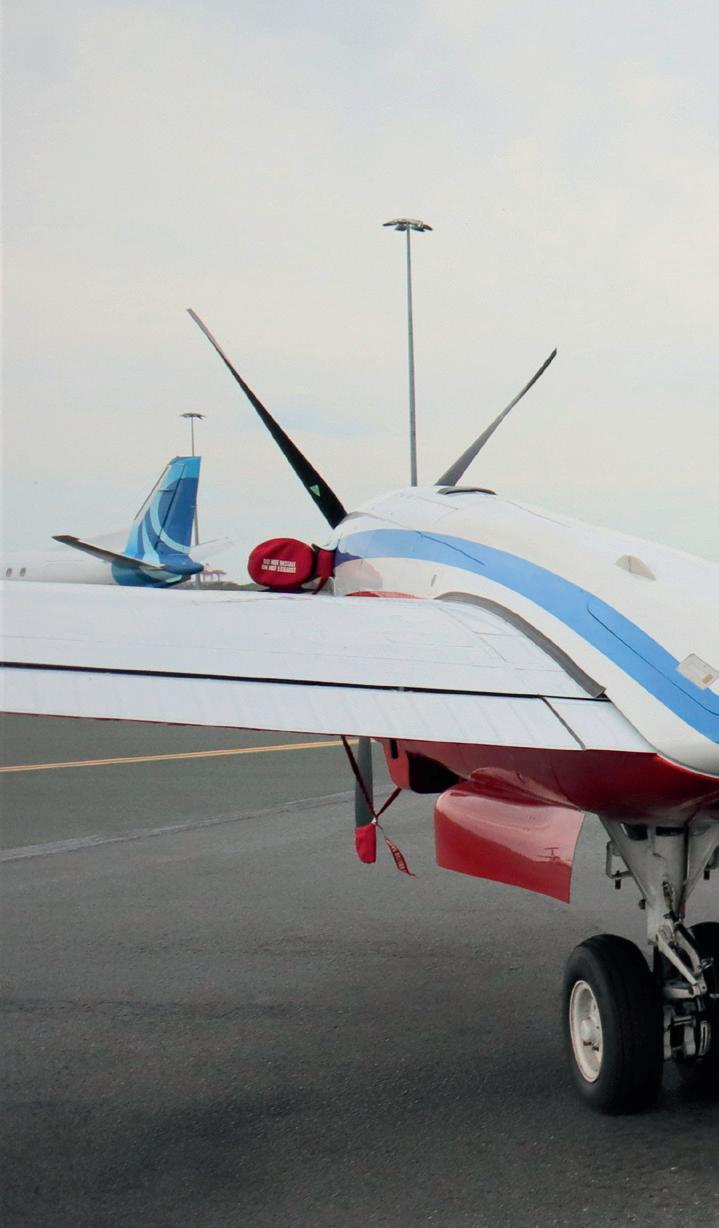
3 minute read
A day in the life of Jenee Williams RFDS (Queensland
Section) Flight Nurse, Brisbane
Registered nurse and midwife Jenee Williams first jumped onboard with the Royal Flying Doctor Service (Queensland Section) in 2020.
Based out of Charleville in South West Queensland, Jenee split her time with the service between emergency retrievals and attending Primary Health Care clinics in rural and remote communities across the region.
Today, Jenee is part of the RFDS Brisbane-based crew who transport more than 2200 patients and fly more than 1.2 million kilometres each year.
As Jenee explains, there is no ‘typical day’ for an RFDS flight nurse, and what might begin as a standard interfacility transfer –— which RFDS delivers in partnership with the Queensland Government — can quickly change to something more acute.
“You could start your day at Hervey Bay with an NSTEMI transfer and very easily see yourself out at Cunnamulla for a paediatric trauma. The variety and severity of patients varies greatly from shift to shift and from task to task,” Jenee said.
05:00 Time to wake up and prepare lunch for the day.
06:00 If I’m rostered on for a day-shift like I am today, I arrive at the Base and commence the morning equipment checks and signout drug packs for the day.
06:30 I check the iPad for daily taskings and liaise with Retrieval Services Queensland (RSQ) regarding tasks for the shift. We have to consider what the priority and dependency of the patient is, and if a medical officer is required for the transfer.
A large majority of RFDS work is flight nurse only, with medical officers/teams coming along to cases as they are required. Often an aircraft may receive multiple tasks for the day which may see the aircraft stop in at multiple locations to pick up patients. When we are tasked nurse only, we are supported by an RSQ medical coordinator when seeking advice on patient management or medication orders over the phone.
06:40 More often than not, RSQ already has a plan for the day that includes movement of patients from peripheral hospitals — including those who may need specialist intervention at tertiary centres. Often this can include specialists in cardiology, paediatrics and maternity.
RFDS aircraft have capabilities to move a variety of patients from neonates in cots, children in padimate harnesses, as well critically unwell patients. Essentially our aircraft are mobile intensive care units — providing mechanical ventilation, cardiac and arterial line monitoring, blood and medication administration and i-STAT bloods.

07:15 Packing aircraft, securing equipment, as well as attending aircraft safety checks — such as checking O2 levels, suction and battery levels. Given the isolated nature of being at 20,000 feet, often as a solo clinician, it is vital that all equipment and consumables are checked and I have everything I might need for the patient. There is no popping over to the next ward for equipment!
07:30 Ready to zig zag into the blue. As flight nurses, we must be ready for all situations and be ready to go anywhere. We are required to have significant experience in critical care areas of ICU and emergency, in addition to being registered midwives; this skill mix is essential with the variety of taskings the day could bring. I was drawn to the adventure and challenge being a flight nurse with the RFDS offered and I really enjoy that work for me has no typical day!
07:00 Once the pilot and I have task details and our destinations, a pre-flight phone call to the referring facility is made. This is to ensure all the aeromedical considerations have been made for the patient, such as confirming the patient weight, if any escorts will come with the patient, as well as discussing the clinical considerations: recent vital signs, infectious states, ensuring the patient has IV access and what infusions or medications might be required for the flight.
Preparation is key in the aeromedical environment. As a cohort, nurses and midwives are very good with preparation, applying this to an aeromedical environment is so important to our role as a flight nurse. We must consider what the worst-case scenarios we are preparing for are, and the anticipated changes we might see when we move patients from hospitals into the aircraft and to altitude.
A Day in the Life is a regular column opening the door into the life of a person working in their field of health care. If you would like to share a day in your working life, please write to: hh@wfmedia.com.au









